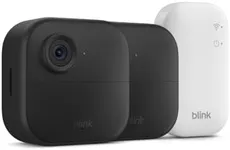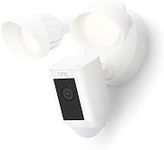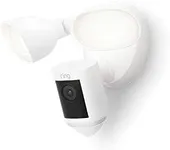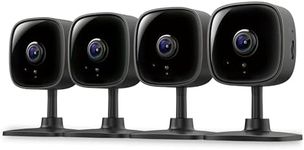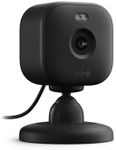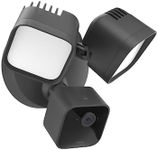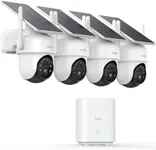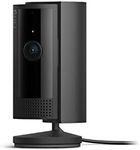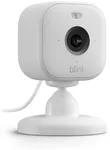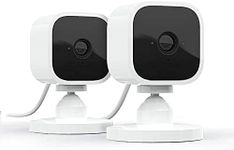Buying Guide for the Best Home Security Cameras
Choosing a home security camera can feel overwhelming, but it's all about understanding how you want to protect your home and what features will help you do that. Start by thinking about where you’ll place the cameras—indoors, outdoors, or both. Consider your privacy preferences, how often you want to check on your home, and whether you want to interact with visitors remotely. These questions will help you narrow down what matters most and guide you to the best camera for your specific needs.ResolutionResolution indicates how clear and detailed the camera’s video will be. Higher numbers mean sharper images. Most cameras range from 720p (HD), 1080p (Full HD), to 2K and even 4K. While 720p is basic and fine for general monitoring, 1080p is more common and provides good clarity for identifying faces or license plates. 2K and 4K offer even finer detail but can take up more storage space. Think about if you need to recognize small details—if you do, go higher in resolution; if the main goal is just to see general movement, a lower resolution might be enough.
Field of ViewThe field of view describes how much area the camera can see. This is often measured in degrees, like 90°, 120°, up to 180°. A wider field of view allows the camera to capture more of an area, which is ideal for large rooms or yards. A narrower field of view focuses in on a smaller, more specific area. If you want to cover an entire driveway or front yard with one camera, choose a wide field of view. For monitoring a doorway or hallway, a narrower view will do.
Night VisionNight vision lets cameras see in the dark using infrared light. The range tells you how far the camera can see at night—ranges vary from 10 feet to over 60 feet. If your camera will be in a dark location or outside, night vision is essential. Pick a camera with a longer night vision range if you want to keep an eye on larger outdoor areas, while shorter ranges are fine for smaller, indoor spaces near entryways.
Storage OptionsCameras store recorded footage either in the cloud (online) or locally using a memory card or hard drive. Cloud storage lets you view footage from anywhere, but may come with monthly fees. Local storage avoids recurring charges but has limits on how much video you can save. Think about how long you want to keep recordings and how comfortable you are with storing video online versus on a device at home.
Motion DetectionMotion detection means the camera only records or alerts you when it senses movement. There are simpler systems that detect any movement and more advanced ones that can distinguish between humans, animals, and cars. If you want to avoid lots of unnecessary alerts (like from branches swaying in the wind), look for cameras with customizable or smart motion detection. If you just need basic awareness, the simpler options may work.
Power SourceCameras can be powered by plugging into an outlet, using batteries, or even solar panels. Plug-in cameras offer nonstop power but need to be near electrical outlets. Battery-powered ones can go almost anywhere but need occasional recharging or battery changes. Solar-powered options are great for outdoor spots far from plugs. Your choice depends on where you want to put the camera and whether you want to think about charging or wiring.
Weather ResistanceIf you plan to place your cameras outdoors, weather resistance is critical. Cameras are rated using terms like IP65 or IP66, which show how well they withstand dust and rain. Higher numbers mean better protection. For indoor use, this isn't needed, but for outside, make sure the camera is rated for weather so it keeps working year-round.
Smart Home IntegrationMany cameras now work with smart home systems like voice assistants or other smart devices. Some can be controlled with your phone, smart displays, or linked to alarms. If you already use a smart home hub or want your camera to work with other devices (like triggering lights when motion is detected), choose a camera that supports the platforms you use.
Two-way AudioTwo-way audio means the camera has both a microphone and a speaker, allowing you to listen in and talk through the camera. This is useful for greeting visitors, talking to kids or delivery people, or even scaring away trespassers. If interaction is important to you, go for a camera with this feature. If you only need to watch and listen, it’s less essential.
